Back to Don's Maps
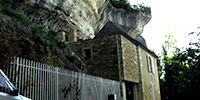 Back to the Abri Pataud site
Back to the Abri Pataud site
Abri Pataud Tools
The Abri Pataud rock shelter was occupied by the Cro Magnon man (Homo sapiens sapiens) for a period of 15 000 years, from 35 000 BP to 20 000 BP, which corresponds to the recent Wurm period, and the cultures of the Aurignacian, Gravettian and Solutrian. This is a record of the tools found at Abri Pataud by the US archaeologist Hallam L. Movius, and on display at Le Musée National de Préhistoire, Les Eyzies-de-Tayac.
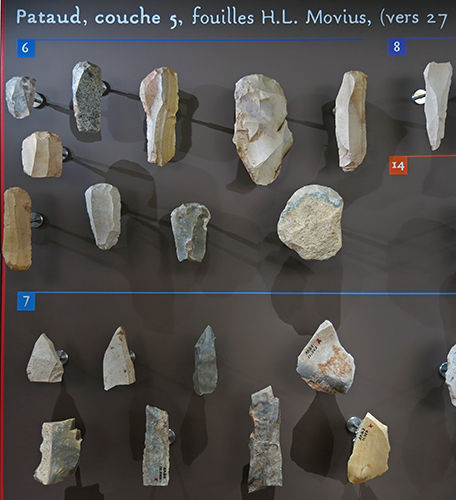
Abri Pataud tools, layer 5, excavations of H. L. Movius.
Age circa 27 000 BP.
■ 6: Grattoirs, scrapers on the end of a blade
■ 7: Burins
■ 8: Retouched tools
■ 14: Composite tools
Photo: Don Hitchcock 2014
Source: Originals, Le Musée National de Préhistoire, Les Eyzies-de-Tayac
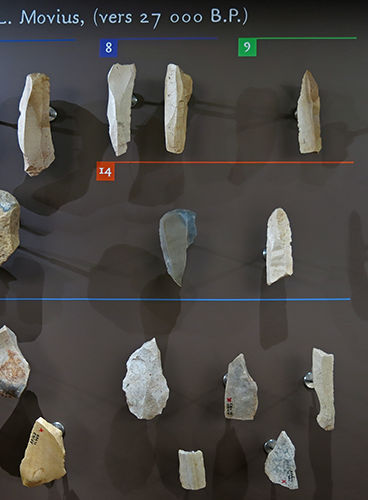
Abri Pataud tools, layer 5, excavations of H. L. Movius.
Age circa 27 000 BP.
■ 7: Burins
■ 8: Retouched tools
■ 9: Perçoirs becs, drills/borers
■ 14: Composite tools
Photo: Don Hitchcock 2014
Source: Originals, Le Musée National de Préhistoire, Les Eyzies-de-Tayac
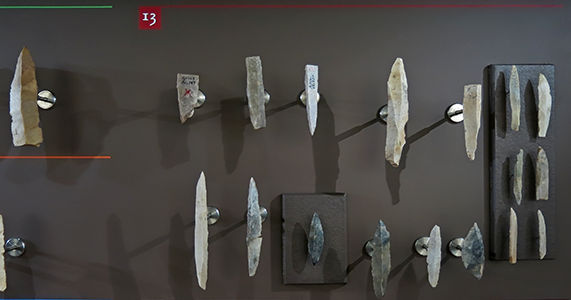
Abri Pataud tools, layer 5, excavations of H. L. Movius.
Age circa 27 000 BP.
■ 9: Perçoirs becs, drills/borers
■ 13: Armatures, tools
■ 14: Composite tools
Photo: Don Hitchcock 2014
Source: Originals, Le Musée National de Préhistoire, Les Eyzies-de-Tayac
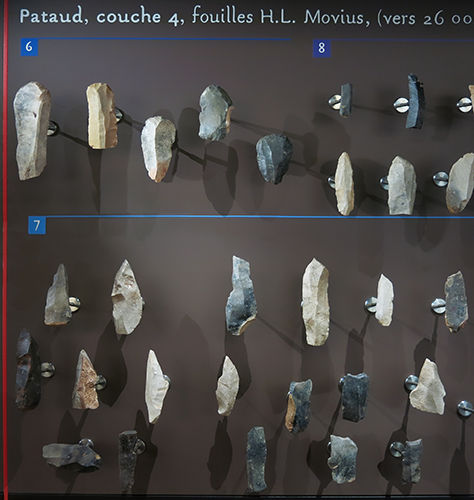
Abri Pataud tools, layer 4, excavations of H. L. Movius.
Age circa 26 000 BP.
■ 6: Grattoirs, scrapers on the end of a blade
■ 7: Burins
■ 8: Retouched tools
Photo: Don Hitchcock 2014
Source: Originals, Le Musée National de Préhistoire, Les Eyzies-de-Tayac

Abri Pataud tools, layer 4, excavations of H. L. Movius.
Age circa 26 000 BP.
■ 7: Burins
■ 8: Retouched tools
■ 9: Perçoirs becs, drills/borers
■ 11: Notched/denticulated tools
■ 13: Armatures, tools
■ 14: Composite tools
Photo: Don Hitchcock 2014
Source: Originals, Le Musée National de Préhistoire, Les Eyzies-de-Tayac
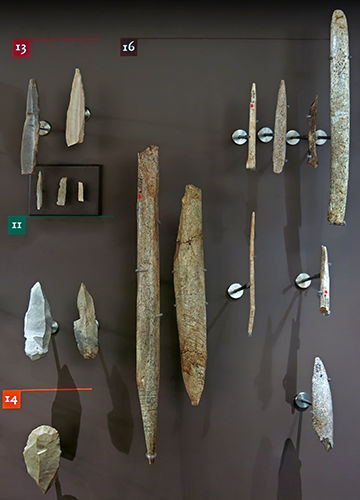
Abri Pataud tools, layer 4, excavations of H. L. Movius.
Age circa 26 000 BP.
■ 11: Notched/denticulated tools
■ 13: Armatures, tools
■ 14: Composite tools
■ 16: Bone industry
Photo: Don Hitchcock 2014
Source: Originals, Le Musée National de Préhistoire, Les Eyzies-de-Tayac
( Note the classic Isturitz type 'sagaies' in the photo above, but with roughly executed approximately helical grooves. These are not, so far as I am aware, found on the sagaies from Isturitz, the grooves or score marks of this shape being found only on sagaies from Abri Pataud and on similar sagaies from the Belgian Palaeolithic at les grottes de Goyet, Province of Namur, Belgium, as noted by Otte (1976). I would be interested in knowing about any other occurrences of this feature at other sites.
It is interesting to speculate on the function which these score marks or grooves might have performed. Scoring of this type is often used widely in the Palaeolithic toolkit on an oblique flat surface at the end of a bone, ivory or antler point for a spear, presumably to aid adhesion when gluing it in place, and to seat the piece firmly on its support - Don )
References
- Movius H.L. Jr, David N., Bricker H., Clay B., 1968: The analysis of certain major classes of upper palaeolithic tools: Stratigraphy, American School of Prehistoric Research, Peabody Museum, Harvard University, Cambridge, Massachusetts
- Movius H.L. Jr, 1977: Excavation of the abri Pataud, Les Eyzies (Dordogne): Stratigraphy, American School of Prehistoric Research, bull. 31, Peabody Museum, Harvard University, Cambridge, Massachusetts, 167 p., planches h. t.
- Otte M., 1976: Présence de 'sagaies d'Isturitz' dans le Paléolithique de Belgique, Bulletin de la Société préhistorique française, Comptes rendus des séances mensuelles, tome 73, n°2, 1976. pp. 48-49; doi : 10.3406/bspf.1976.8411
Back to Don's Maps
 Back to Archaeological Sites
Back to Archaeological Sites